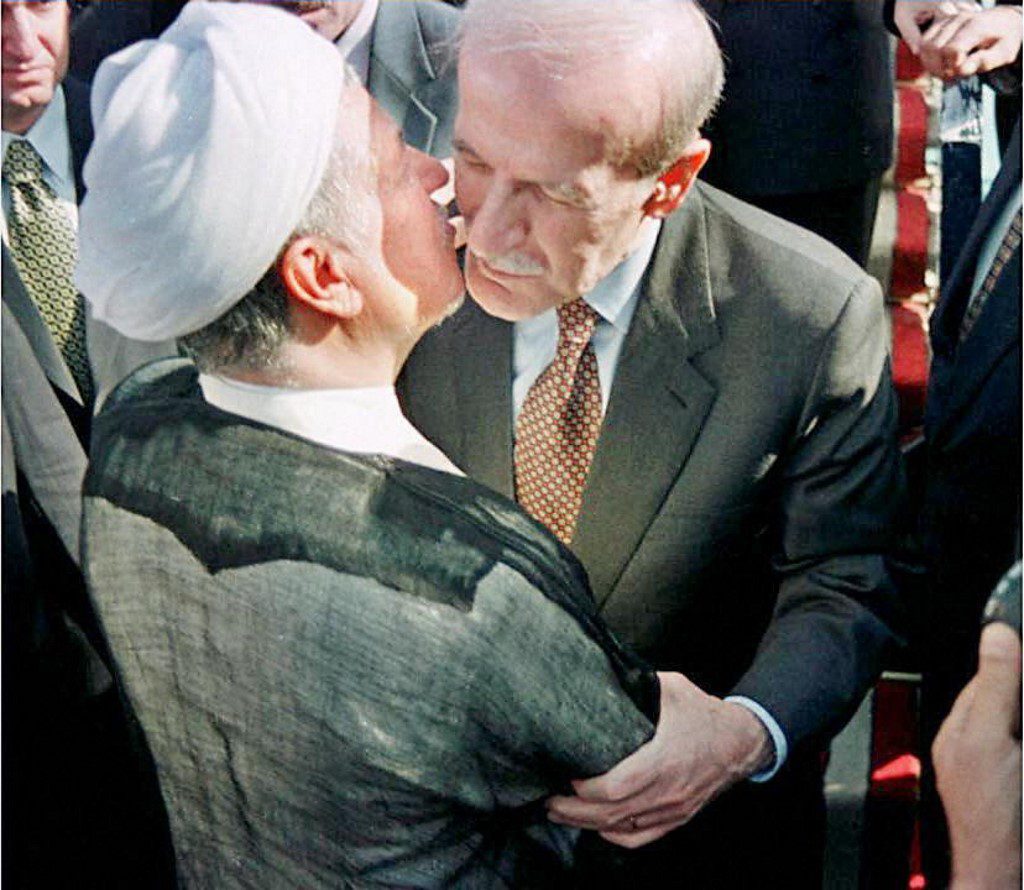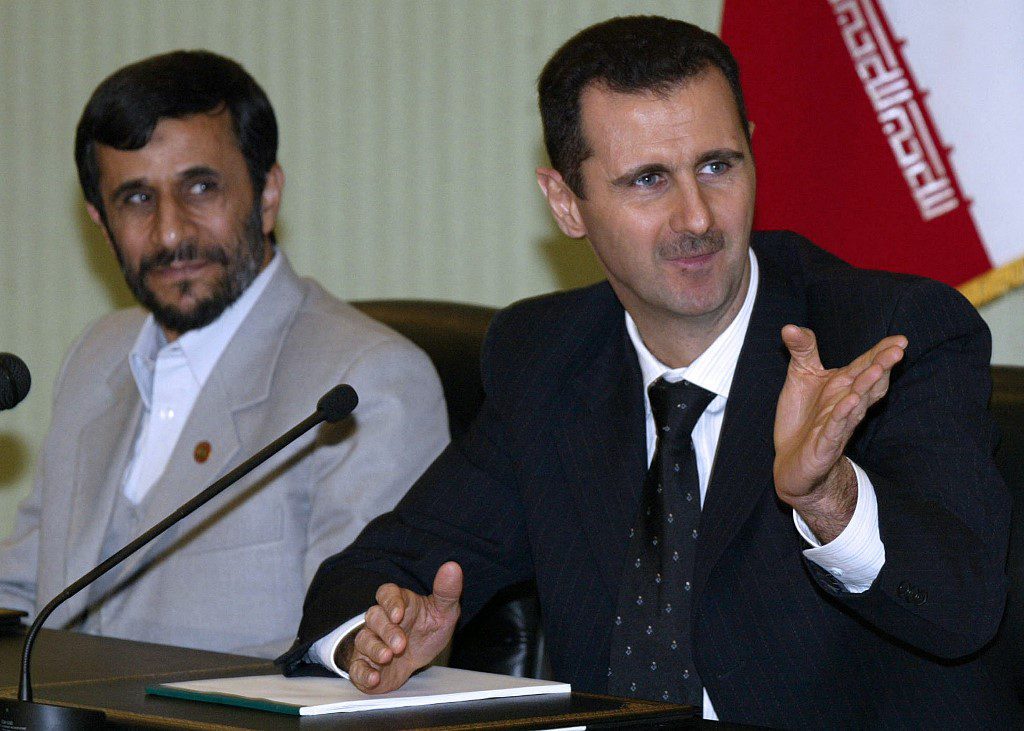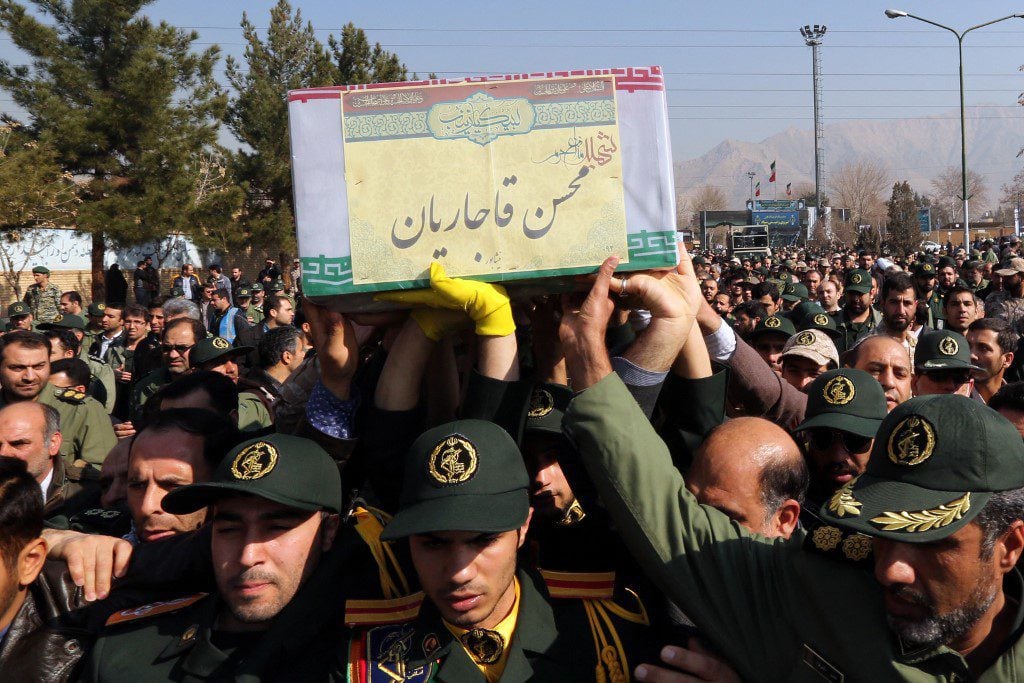
Hussein Al Zoubi
The Iranian economic presence in Syria is inseparable from Tehran’s political and military influence, which was consolidated by subjective factors related to the two ruling regimes, and objective factors linked to developments in the region after the American invasion of Iraq in 2003, then the assassination of former Lebanese Prime Minister Rafic Hariri in February 2005, the July war between Hezbollah and Israel in 2006, up to the Arab Spring revolutions at the end of 2010 and the beginning of 2011.
The Iranian economic presence in Syria is inseparable from Tehran’s political and military influence. That presence is due to subjective factors related to the two ruling regimes, and objective factors linked to developments in the region after the American invasion of Iraq in 2003, then the assassination of former Lebanese Prime Minister Rafic Hariri in February 2005, the July war between Hezbollah and Israel in 2006, up to the Arab Spring revolutions at the end of 2010 and the beginning of 2011.
As for the Syrian regime, Hafez al-Assad managed to balance the relations with Iran to serve the regime’s interests, strengthen its pillars and maintain balance in Syrian society. When Iraq, led by Saddam Hussein and the Iraqi Ba’ath Party, was waging war against Iran (1980-1988), al-Assad and the Syrian Ba’ath Party were on Iran’s side.
Perhaps he had his reasons for this, such as Saddam’s regime’s support for his opponents, including the Muslim Brotherhood and the right-wing Ba’athists, but without allowing the latter to be present in Syria. Even religiously, the Shiite existence was minimal. Damascus was not teeming with Husseiniyas and Shiite religious ceremonies we see now during the reign of his son Bashar and knowing that the Shiites in Syria did not exceed 1% of the population. Furthermore, no media appearance was noticed for any Shiite Maraji on the official media. When Iran attempted to have a “religious” presence through the al-Murtada association, which was managed by his older brother Jamil al-Assad, and represented the religious arm of the Defence Companies led by his younger brother “Rifaat al-Assad”, Hafez later decided to dissolve it.
When Khomeini came to power in 1979 following the revolution against the Shah, the Iranian regime adopted the theory of exporting the concept of revolution to the Arab countries. Therefore, it clashed with Saddam Hussein until the overthrow of the Iraqi regime. As a result, Iran’s Shiite allies came to power In Baghdad. The idea of exporting the revolution resurfaced, adding to it the historic Persian dream of reaching the Mediterranean after Mahmoud Ahmadinejad came to power, who was considered one of the hawks of the Iranian Revolutionary Guards and one of those who stormed the US embassy in Tehran during the famous hostage crisis.
The Iranian re-movement towards the “west” of the region in 2005 depended on two pillars. The first was the military, represented by supporting militias, such as Hezbollah, which became one of Iran’s religious and military forces on the Mediterranean. In that context, Iran polarized the Palestinian organizations. Militias were also formed in Iraq, most notably the Mahdi Army led by Muqtada al-Sadr and the Badr Corps led by Hadi al-Amiri, who became the nucleus of the Popular Mobilization militia. In this context, Ahmadinejad said in a statement: “Syria is the front line for the defence of the Islamic nation”. And the former Iranian Defence Minister Ali Shamkhani said, “Syria is a strategic depth for Iran, and it is part of the national security of the Iranian Republic in the region, and Tehran has always attached importance to the security of Syrian territory”.
The second pillar of re-movement consists of two parts. The first is social, as Damascus and its countryside witnessed a significant expansion of Shiite seminaries (Hawza) until it became the third-largest Hawza in the world after the seminaries of Qom in Iran and Najaf in Iraq. Statistics reveal that 500 Hawzas and Husseiniyas are distributed over the Syrian cities, where thousands of Iranian clerics teach there. The second part is economical.
From the Shah to Khamenei

The Trade Promotion Organization of Iran says that the first economic agreement between the two countries dates back to July 1974. Based on that agreement, Iran granted Syria a loan of $150 million, in addition to $50 million to finance agricultural and industrial projects. The following year, Iran provided, according to the same source, $300 million. After this, the agreement concentrated on Iran’s exports of transport vehicles, while Syrian exports on phosphates. The following agreement was in 1982, about three years after the Iranian revolution and Khomeini’s accession to power and two years after the outbreak of the Iran-Iraq war. The most important clause in the agreement stated that Iran exports 9 million tons of oil annually to Syria, in exchange for Syria exporting 400,000 tons of phosphate to Iran. It raises its exports to one million tons to fully meet the needs of the Iranian petrochemical sector, with some sources indicating that the first part of the agreement was based on a barter system.
Throughout the 1980s, the Syrian regime was immersed in the problems of Lebanon and the Muslim Brotherhood at home, in addition to the dispute of the two brothers and Rifaat al-Assad’s military coup attempt, in conjunction with a fierce conflict with Saddam Hussein, and the two regimes supporting each other’s opposition. However, by the 1990s, the region was on its way to closing some cases and opening others. The Iran-Iraq war had ended, the Lebanese civil war had diminished with the Taif Agreement. The Iraqi forces invaded Kuwait in August 1990, and the Syrian regime entered the peace process through the Madrid Conference.
In September 1990, Iran and Syria agreed to establish joint corporations in various sectors, especially construction. Then, the Joint Committee for Economic and Trade Cooperation between the two countries held its first session in the first half of 1996.
Bashar al-Assad inherited power in July 2000 after his father passed away. As soon as he took over, he laid the foundations for economic liberalization policies in the Ninth Five-Year Plan (2000-2005). During that period, it was expected that trade relations would grow between Damascus and Tehran, as the fall of Saddam’s regime unlocked land transport paths between the two countries. The statistics of the Iran Customs Administration show that the value of Syrian exports boomed in the last year of the ninth five-year plan, compared to the first year, by 4.6 times, or about 362%. On the other hand, statistics show that the value of Iranian exports increased by 4.8 times or about 383%. Despite the almost similar growth rates of the two countries’ exports, the trade balance deficit favouring Tehran during the ninth five-year plan was huge and amounted to 384%.
The Tenth Five-Year Plan (2006-2011) was an extension of the Ninth Plan, as the value of Syrian exports increased in the last year of the plan by 2.8 times, or about 182%, while Iranian exports increased by 1.6 times, approximately 58%.
The fifth report of the Syrian Investment Agency, issued in 2010, revealed that from 1991 to 2005, Iran had four projects with an investment cost of more than five billion Syrian liras (the dollar in that period ranged between 40-50 liras). From 2006 to 2010, Iran invested in seven projects at the cost of 20 billion liras (at that time, one dollar was equivalent to about 50 liras).
According to press reports, the Syrian government estimated Iranian investments in 2006 alone at more than 400 million dollars; thus, it became the third-largest investor after Saudi Arabia and Turkey. In September of the same year, officials from the two countries announced plans to expand Iranian projects of 10 billion dollars over the next six years.
Iranian officials announced that the value of Iranian technical and engineering services in 2010 had amounted to $2.2 million. In the same year, the two countries agreed to establish a Syrian-Iranian Bank for exports, with an initial capital of $30 million, 60% of which was owned by the Iranian side. Among the Iranian projects in Syria during that period were the Hama Cement Factory, a joint project between the Iranian Sanat company and the Syrian Cement Company, the contracts of the Iranian “Parsian” company with the Public Establishment for Distribution and Exploitation of Electrical Energy, the SIAMCO project and the Siveco International company for automotive production, the latter recorded considerable losses in the local market.
The Iranian Onslaught

As we mentioned before, the Iranian economic movement is not separated from the military influence and does not neglect the sectarian social dimension. With the outbreak of the Syrian revolution, Iran moved through its military arms, the Lebanese Hezbollah, factions from the Iraqi Popular Mobilization, the Afghan Fatemiyoun Division, the Pakistani Zainebiyoun, and military leaders and advisors from the Revolutionary Guards, as Iran itself declares.
In parallel with that, Tehran moved economically and logistically. It secured a land route that links central and northern Iraq with Damascus and the Mediterranean coasts in Latakia and Lebanon. That move was a significant turning point for Iran. It allowed it to play a pivotal role in increasing its exports of non-oil goods to Iraq, Syria, Lebanon, Jordan and the Arab region in general. In addition, Iran could provide its products with a competitive advantage over other products thanks to reducing transportation costs and the ease of road. In addition to the Syrian-Iranian free trade zone agreement on March 21, 2012, which reduced the rate of intra-regional customs duties for goods exchanged between the two countries by 96%.
The financial abundance resulting from the loans and credit line led to a rise in Iranian exports. According to the Iranian Customs Administration, the trade exchange volume between the two sides amounted to $869 million in 2014. A significant deficit in the balance of exchange was in favour of Tehran.
In 2013, a gas transport agreement was signed, known as the Islamic pipeline agreement, between Iran, Iraq and Syria, to reach the Mediterranean at the cost of up to $10 billion. According to the agreement, about 110 million cubic meters of gas per day will be pumped through this pipeline when implemented.
Tehran secured its share of the Syrian energy market by signing memoranda of understanding with the Syrian regime. Under a memorandum signed at the beginning of 2017, a major oil refinery will be established near Homs, with a refining capacity of 140,000 oil barrels per day. Under the agreement, Iran will rebuild and fully equip the Homs and Baniyas refineries, knowing that the production of both refineries suffices Syria’s consumption needs.
The Iranian Mabna Construction Group also signed a contract to re-establish five electric power plants in Aleppo for 130 million euros. Syria will import 540 megawatts of electricity from Iran to Latakia. The financial value of the contracts signed with Iran in 2016 with the Ministry of Electricity amounted to about one trillion liras (more than 4.5 billion dollars at the exchange rate of 430 liras for the dollar). The contracts were signed with the mentioned company to provide the stations in Aleppo and Baniyas with supply kits. In the industrial sector, Iran obtained, according to memoranda of understanding signed with the delegation of the Syrian government, which visited Tehran at the beginning of 2017, investments in the phosphate mines in Khunayfis, in the countryside of Homs. Thus, Tehran obtained crude phosphate reserves estimated at 1.8 billion tons.
In the financial and banking sectors, Iran opened a credit line to Damascus, and in January 2013, Iran provided its first loan of $1 billion to support the fiscal deficit. In August 2013, Tehran and Damascus activated the second loan to the Syrian government, amounting to $3.6 billion, mainly on importing oil derivatives from Iran exclusively. In July, President Bashar al-Assad signed a law approving the third loan of $1 billion provided by Iran to finance exports. In the communications sector, the two sides agreed in early 2017 to grant Iran a license to operate a mobile phone company in Syria, knowing that the revenues of the Syrian mobile company are estimated at 12 billion Syrian liras annually, provided that the volume of investment in the new operator would reach about $300 million, 80% of which would be owned by the Iranian side. The Syrian side would own the remaining 20%.
The Two Sacred Shrines

Some of these projects have come into force, and others are still in the form of agreements. Thus, Iran has secured its share in post-war Syria, and an international consensus has been obtained to start reconstruction. In this context, Tehran tried to begin the rebuilding process and complete a political process to achieve the political transition in Syria.
In September 2017, Iran participated in the Rebuild Syria 2021 exhibition held in Damascus with about 40 companies out of 164 companies from 23 countries. And in the first trade fair in Syria, since 2011, held in August 2017, 30 Iranian companies participated in various fields. In early 2017, a memorandum of understanding was signed, in which Damascus promised Iran that it would provide construction contracts to Iranian companies. Still, Iran did not wait and began paving the infrastructure to implement projects with a social-sectarian demographic dimension. In this regard, Iran has been active, through real estate brokers buying houses in the heart of Damascus, under the pressure of the financial need of the people. It has also participated in emptying the area from Darayya to Sayyidah Zaynab of its residents and displacing them to Idlib.
The area between Darayya and Sayyidah Zaynab represents the southern side of Damascus. In this undeclared project, Iran is trying to establish a Southern Suburb of Damascus similar to the Southern Suburb of Beirut, in Iran’s religious investment in the shrine of Sayyidah Sakinah in Darayya, southwest of Damascus, and the shrine of Sayyidah Zaynab, southeast of Damascus. That idea is probably the reason behind the regime’s refusal to return the people to their areas. The refusal especially applies to the Yarmouk camp for Palestinian refugees and al-Hajar al-Aswad which was majorly inhabited by displaced Syrians from the Golan. It is also important to note that both areas are geographically located between the two shrines.
The southern suburb of Damascus, or the two sacred shrines project, as seen by observers, will have a military role in any military conflict that Iran or its arms may run in the region, in which the militias of Hezbollah and Abu al-Fadhal al-Abbas are concentrated, as well as Fatemiyoun and Zainebiyoun factions, in addition to the Syrian Hezbollah project.
The Black Economy
If Iran was paving the way for a Southern Damascus Suburb, it achieved its control through the Lebanese Hezbollah over the Damascus countryside. This countryside is adjacent to the more rugged Lebanese-Syrian borders represented in the areas of Zabadani and Madaya. It used to be smuggling areas between the two countries in the past. It also took control of the border area in the western countryside of Homs from the side of the al-Qusayr.
From those areas, Iran and its arms manage what can be called the black economy. The Lebanese Hezbollah is accused of financing its fighters from the drug trade across a line extending from the Lebanese Beqaa to southern Damascus, then south Syria, and from there to the Gulf. In addition, Hezbollah smuggles fuel, including gasoline, diesel and other goods, according to what the market requires in both countries. That was announced by more than one Lebanese official who stands against Hezbollah, which declares allegiance to the Guardianship of the Islamic Jurist and the Iranian leader, Ali Khamenei.
A Cold Russian-Iranian Conflict
According to the logic of interests, the Russians, whose companies are looking for their share of the Syrian cake, will not be happy with an overwhelming presence. In this context, the conflict between the two countries will occur through their wings within the Syrian regime. Perhaps this is what contributed to obstructing the implementation of the signed Iranian agreements, as Iraj Rahbar, deputy head of Mass-Construction Association in Tehran, said: “Nothing has happened since 2018, and we have not done any work on reconstruction in Syria.
None of the items contained in the important agreements that the two countries signed was economically interpreted.” The Iranian Mehr news agency quoted him saying, “For example, it was scheduled to build a town with a capacity of 200,000 housing units in Damascus by the Mass-Construction Association in Tehran, but this did not happen”.
Meanwhile, Heshmatullah Falahat Bisha, a member of the National Security Council of the former Iranian parliament, said Iran had spent $30 billion in Syria during the past ten years. According to him, the sums – paid for military intervention to keep the Assad regime in power – must be returned. Also, Major General Yahya Rahim Safavi, the military advisor to the Iranian Supreme Leader Ali Khamenei, confirmed that Iran’s interventions in the region’s countries were not for free but were made in exchange for money, especially in Iraq and Syria. Safavi said: “We signed contracts with the Syrians, and we will get things in return”, but he added: “The Russians benefit more from Syria than we do”. Safavi estimated that rebuilding Syria will take several years and will require at least $300 to $400 billion.
He added, “Iran must compensate for the losses it incurred in Syria, and the Syrians are ready to compensate for them from their oil, gas and phosphate mines”.


